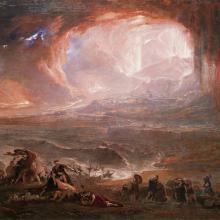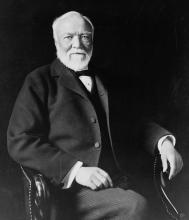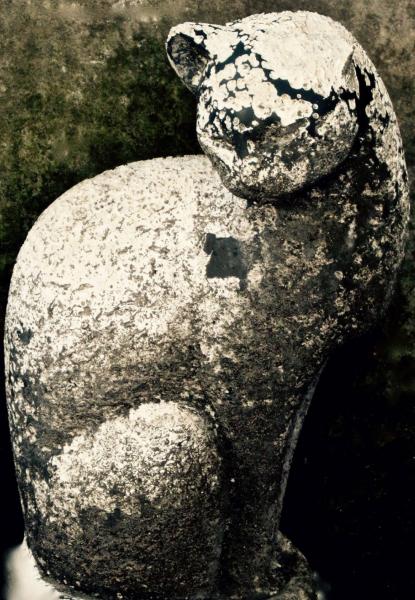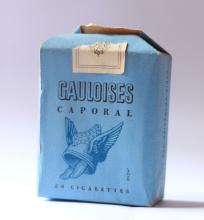
When Mount Vesuvius erupted in 79 CE, Pompeii was not the only casualty.
Herculaneum – nine miles to the north – was likewise engulfed, a pyroclastic surge burying the town and smothering many of its inhabitants in a thick shroud of volcanic ash.
Emanuel Maurice, Prince d’Elbeuf, began excavating here in 1719, and it was from his posthumous estate that the Edinburgh diarist and lawyer James Boswell acquired ‘not cheap’ the plaster cast of a young female cat (shown foot of page) during his Grand Tour of Italy, Corsica, and France in 1764/66.
Boswell named it Louisa or Kitty after Louisa ‘Kitty’ Allaway – a young woman with ‘a prodigious enthusiasm for learning’ – to whom three years earlier, above a Cowgate chop-house, he had delivered a course of instruction in the Latin tongue and Practical Philosophy.
He afterwards admitted to having ‘earned [learned?] as much in return’.
 Rise and fall
Rise and fall
Boswell’s wife Margaret Montgomerie disliked the object and its distressing associations, and removed it from a first-floor window out into the garden of Auchinleck House (above) in February 1788.
There it remained – in pieces, seemingly worthless, and exposed to the elements – until passing into the possession of Edinburgh’s Faculty of Advocates sometime in the mid-19th century.
Under the direction of the Library's Keeper Samuel Halkett, it was painstakingly reassembled c.1867.
 Lieut-Col. Leonard Llewelyn of Linlithgow purchased the cast in 1902 and presented it as an amusing gift to the US tycoon Andrew Carnegie (above).
Lieut-Col. Leonard Llewelyn of Linlithgow purchased the cast in 1902 and presented it as an amusing gift to the US tycoon Andrew Carnegie (above).
Carnegie in turn bequeathed it to the Patriotic Feline League of Great Britain, a Dunfermline-based charitable sanctuary for retired British Army cats, in 1919.
That institution sold it in 1948 for 15 guineas to Thomas Mogg, who was for many years a considerable dealer in antiquities and curiosities on Gibb’s Close, not far from the former Cowgate premises of Kitty Allaway after whom the cast had originally been named some 185 years before.
And so to today …
Thomas Mogg’s great-granddaughter, Felicity Griffin, is Kitty’s current owner.
 A recently retired pottery teacher, amateur historian, and Pilrig resident, she has spent years researching the story of the cast, piecing it together from family records, wills, bank receipts, and accounts stored in still unidentified corners of the National Library and National Records of Scotland.
A recently retired pottery teacher, amateur historian, and Pilrig resident, she has spent years researching the story of the cast, piecing it together from family records, wills, bank receipts, and accounts stored in still unidentified corners of the National Library and National Records of Scotland.
Now she is keen to generate interest in the object and its unusual provenance ahead of an online auction scheduled for this autumn.
‘She doesn’t maiow, catch mice, or play with string,’ Mrs Griffin told us this morning. ‘But then neither do goldfish. I shall still be sorry to see her go.’
Mrs Griffin hopes for a sale price in excess of £25,000, which, if achieved, would make Kitty’s restored financial value one of the most astonishing dead-cat bounces in history.—AM
Note: Partial academic accounts of the cast appear in: Robert Chatto, ‘Boswell on the Piazza’, Studies in Oenological Tourism 39:4 (Oct. 1967, pp. 650–61); and Elizabeth Swansick and Gloria Gore-Mundi, ‘A Tale of Two Pusses: the Curious Afterlife of an Ancient Roman Domestic Cat’, Journal of Venereal Archeology 40:3, 2nd series (Fall 2002, pp. 37–42).

[Images top-right and centre 1 and 2 and 3, Wikimedia creative commons.]
In the interests of full disclosure and journalistic integrity, we should point out that this article was published before noon on Wednesday 1 April. We recommend readers think very carefully before believing a word of it.


